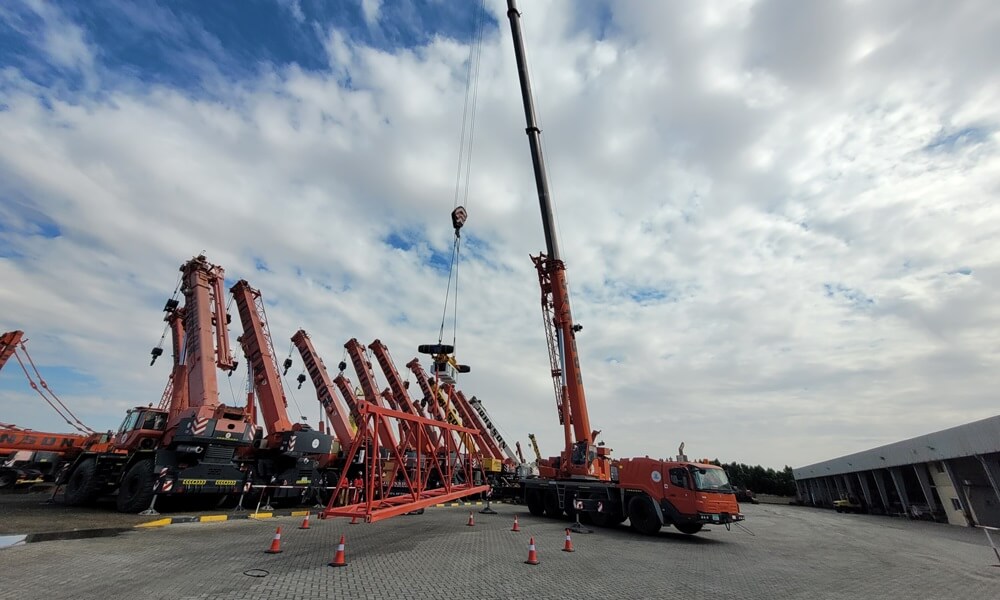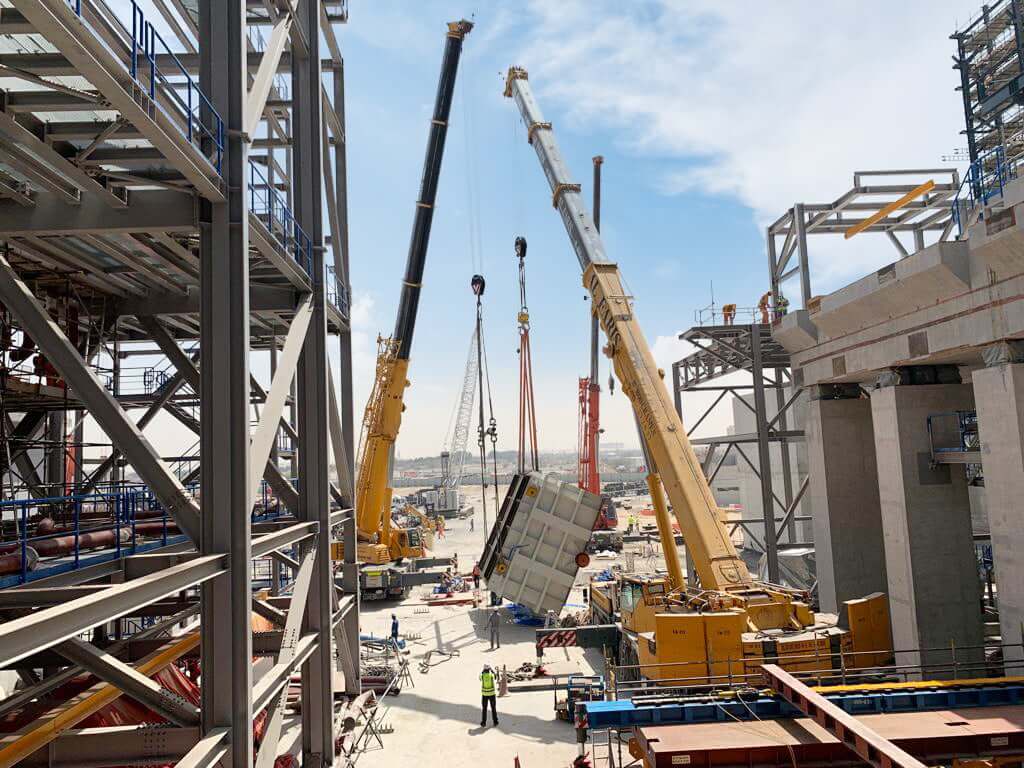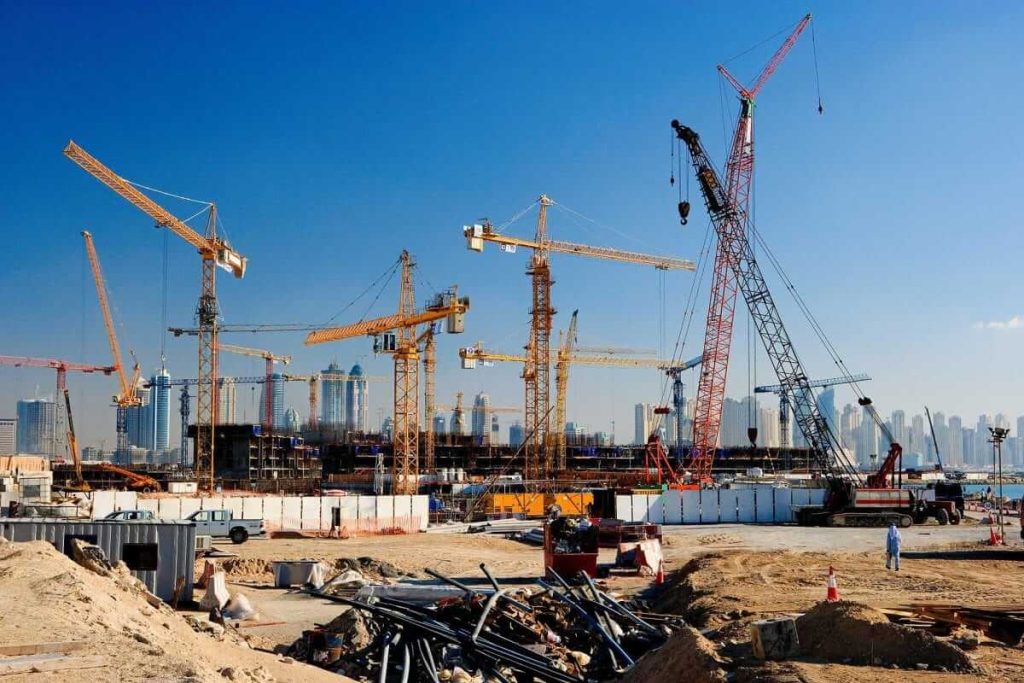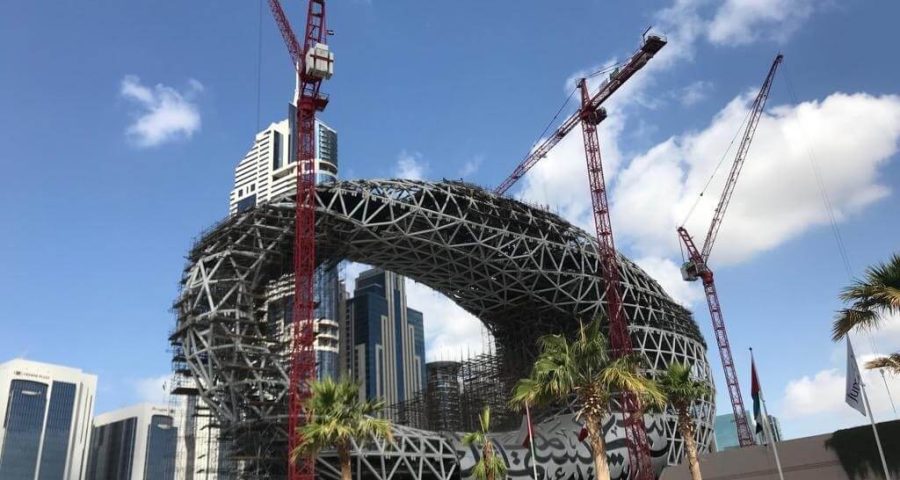Transporting cranes to construction sites in Dubai can be quite a complex task, with various logistical hurdles to overcome. In order to keep up with Dubai’s fast-paced urban development and large-scale construction projects, it is absolutely crucial to ensure that cranes are transported and installed efficiently. This is essential for staying on track with project timelines and budgets. In this article, we delve into the multitude of obstacles encountered when transporting cranes to construction sites in Dubai. From navigating through regulatory red tape to tackling logistical puzzles and taking into account environmental factors, these challenges are not to be taken lightly.

Regulatory Requirements
Understanding regulatory requirements is crucial for businesses to ensure compliance and avoid penalties. It is important to stay updated on the latest regulations that apply to your industry and take the necessary steps to meet them. Failing to comply with regulatory requirements can have serious consequences, including legal issues and damage to your reputation. Therefore
Transporting cranes to construction sites in Dubai involves adhering to a variety of regulatory requirements. Ensuring the safety of both the transport process and the construction site is the primary goal of these regulations. In Dubai, the Roads and Transport Authority (RTA) and other governmental bodies have put in place stringent guidelines for the movement of heavy machinery.
Permits and Approvals: One of the primary regulatory challenges is obtaining the necessary permits and approvals. Companies must secure transportation permits that specify the routes, timing, and conditions for moving cranes. These permits are essential to prevent disruptions to traffic and ensure public safety.
Inspection and Certification: Cranes must undergo thorough inspections and receive certification before transportation. This ensures that the equipment is safe and meets all regulatory standards. Inspections are conducted by accredited bodies, and the certification process can be time-consuming, adding to the logistical planning required.
Compliance with Load Limits: Adhering to load limits on roads and bridges is crucial. Overloaded vehicles can cause infrastructure damage and pose significant safety risks. Companies must carefully plan the transportation route, considering the load-bearing capacity of roads and bridges to avoid any violations.
Logistical Complexities
The logistics of transporting cranes to construction sites in Dubai involve intricate planning and coordination. Cranes are large and heavy, often requiring specialized equipment and vehicles for transport. The logistical challenges include route planning, timing, and coordination with multiple stakeholders.
Route Planning: Effective route planning is critical to ensure that the crane can be transported safely and efficiently. This involves identifying the most suitable routes that can accommodate the size and weight of the crane. Factors such as road width, overhead clearances, and turning radii must be considered. Additionally, routes must be planned to avoid congested areas and minimize disruptions to traffic.
Timing and Scheduling: Timing is a crucial aspect of crane transportation. Moving cranes during peak traffic hours can lead to significant delays and increased costs. Therefore, transportation is often scheduled during off-peak hours or at night to reduce the impact on traffic flow. This requires careful coordination with transport authorities and other stakeholders.
Coordination with Stakeholders: The transportation process involves coordination with various stakeholders, including crane manufacturers, transport companies, construction site managers, and regulatory authorities. Effective communication and collaboration are essential to ensure that all parties are aligned and any potential issues are addressed promptly.
Environmental Considerations
Transporting cranes to construction sites in Dubai also involves addressing environmental considerations. The city has stringent environmental regulations aimed at minimizing the impact of construction activities on the environment.
Emission Controls: Heavy machinery, including cranes, contributes to air pollution. Dubai has implemented emission standards to control the levels of pollutants released during the transportation and operation of cranes. Companies must ensure that their equipment complies with these standards to avoid penalties and contribute to the city’s environmental goals.
Noise Pollution: The transportation of cranes generates significant noise, which can disturb residential areas and sensitive zones. Companies must implement noise reduction measures, such as using sound-dampening equipment and scheduling transportation during less disruptive times, to mitigate the impact.
Waste Management: The process of transporting and assembling cranes generates waste, including packaging materials and other debris. Proper waste management practices must be in place to ensure that waste is disposed of responsibly and in accordance with local regulations.

Technical Challenges
The technical challenges associated with transporting cranes to construction sites are significant. Cranes are complex pieces of machinery that require careful handling to prevent damage and ensure operational readiness upon arrival.
Disassembly and Reassembly: Large cranes often need to be disassembled into smaller components for transportation. This process requires skilled technicians and specialized equipment to ensure that the crane can be safely disassembled, transported, and reassembled at the construction site. Any mistakes during this process can lead to delays and increased costs.
Handling and Securing: Cranes must be handled and secured properly during transportation to prevent damage. This involves using appropriate lifting and securing equipment, such as slings, chains, and tie-downs. Improper handling can result in equipment damage and safety hazards.
Weather Conditions: Adverse weather conditions, such as extreme heat, sandstorms, and heavy rain, can affect the transportation process. Companies must monitor weather forecasts and plan accordingly to avoid delays and ensure the safety of the equipment and personnel involved.
Safety Considerations
Safety is a paramount concern when transporting cranes to construction sites. The size and weight of cranes pose significant risks, and stringent safety measures must be in place to protect workers and the public.
Risk Assessment: Conducting a thorough risk assessment is essential to identify potential hazards and implement appropriate safety measures. This includes assessing the transportation route, identifying potential obstacles, and planning for emergency situations.
Training and Certification: Personnel involved in the transportation process must be adequately trained and certified. This includes drivers, crane operators, and riggers. Proper training ensures that all team members are aware of the safety protocols and can respond effectively to any issues that arise.
Emergency Preparedness: Companies must have emergency response plans in place to address any incidents that occur during transportation. This includes having emergency contact numbers, first aid kits, and contingency plans for equipment breakdowns or accidents.
Economic Implications
The transportation of cranes to construction sites in Dubai has significant economic implications. The costs associated with permits, specialized equipment, labor, and potential delays can add up, impacting the overall budget of construction projects.
Cost Management: Effective cost management is crucial to ensure that transportation expenses are kept within budget. This involves optimizing routes, negotiating with transport providers, and minimizing delays to avoid additional costs.
Insurance and Liability: Insurance is an important consideration for crane transportation. Companies must ensure that their equipment is adequately insured to cover any potential damages or losses during transportation. Liability issues must also be addressed, with clear agreements in place between all parties involved.
Impact on Project Timelines: Delays in transporting cranes can have a cascading effect on project timelines. Construction schedules are often tightly coordinated, and any delays in crane transportation can lead to missed deadlines and increased costs. Effective planning and coordination are essential to minimize these risks.

Technological Solutions
Advancements in technology offer potential solutions to some of the challenges associated with transporting cranes. The adoption of new technologies can enhance efficiency, safety, and cost-effectiveness.
Telematics and GPS Tracking: Telematics and GPS tracking systems can provide real-time information on the location and status of cranes during transportation. This allows for better route planning, monitoring, and coordination, reducing the risk of delays and improving overall efficiency.
Simulation and Modeling: Simulation and modeling tools can be used to plan and optimize the transportation process. These tools can simulate different scenarios, identify potential issues, and help develop effective solutions to ensure smooth transportation.
Automation and Robotics: The use of automation and robotics in the disassembly, transportation, and reassembly of cranes can enhance precision and reduce the risk of human error. These technologies can also improve safety by minimizing the need for manual handling.
Conclusion
Transporting cranes to construction sites in Dubai involves a myriad of challenges, including regulatory requirements, logistical complexities, environmental considerations, technical difficulties, safety concerns, and economic implications. Addressing these challenges requires meticulous planning, effective coordination, and the adoption of advanced technologies. By implementing best practices and leveraging technological innovations, a crane company in Dubai can ensure the efficient, safe, and cost-effective transportation of cranes, contributing to the successful completion of construction projects.
For more information on regulatory requirements and best practices for transporting heavy machinery in Dubai, visit the Dubai Municipality and Roads and Transport Authority websites.

I like to give reasonable advice on budgeting to people with any income level. I currently live in Portland, Oregon, and am available for freelance assignments and speaking engagements.
